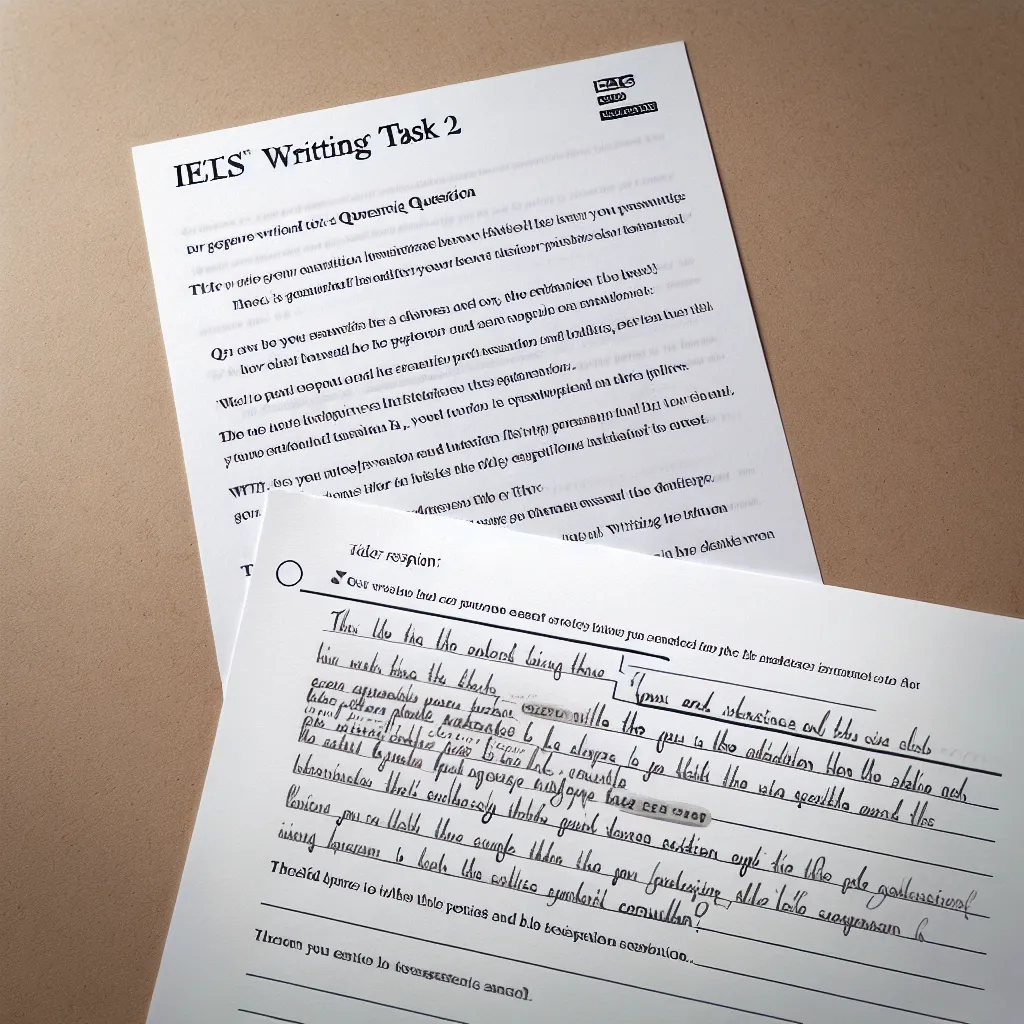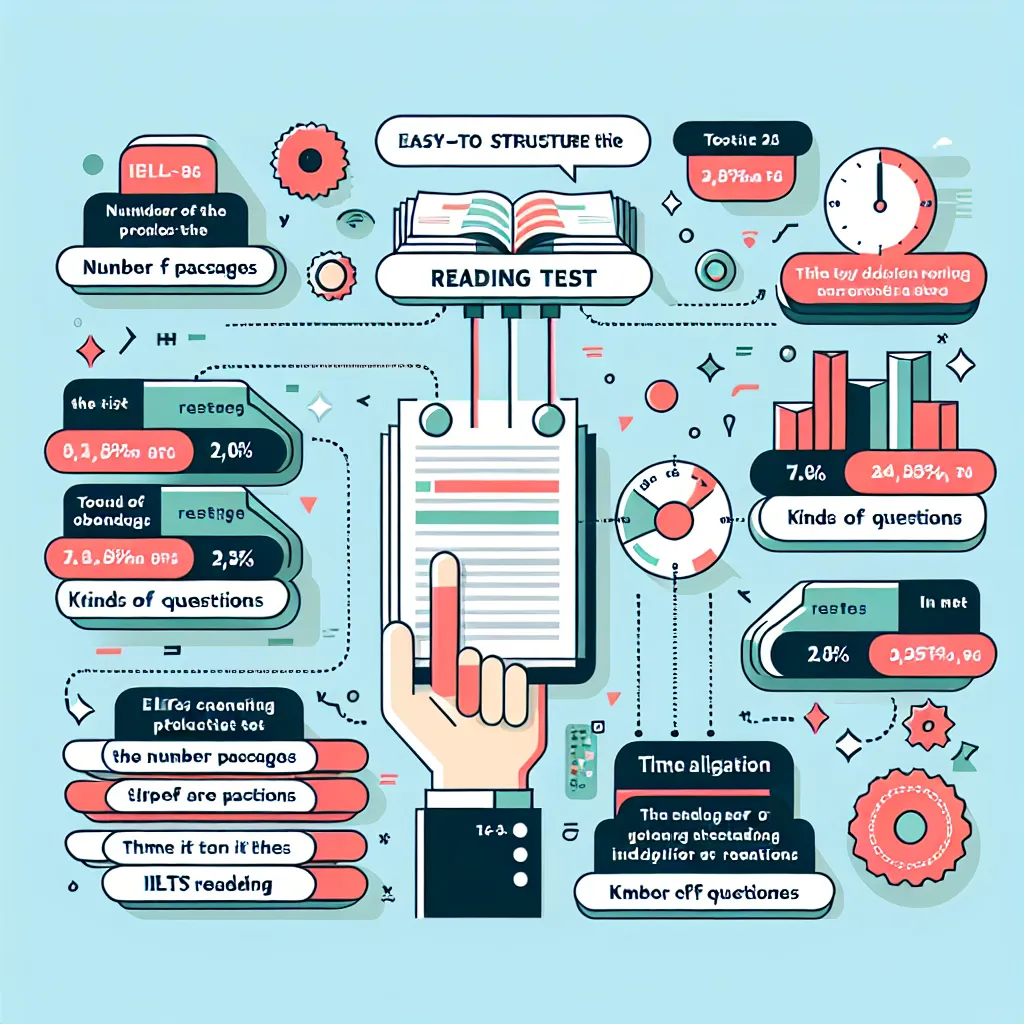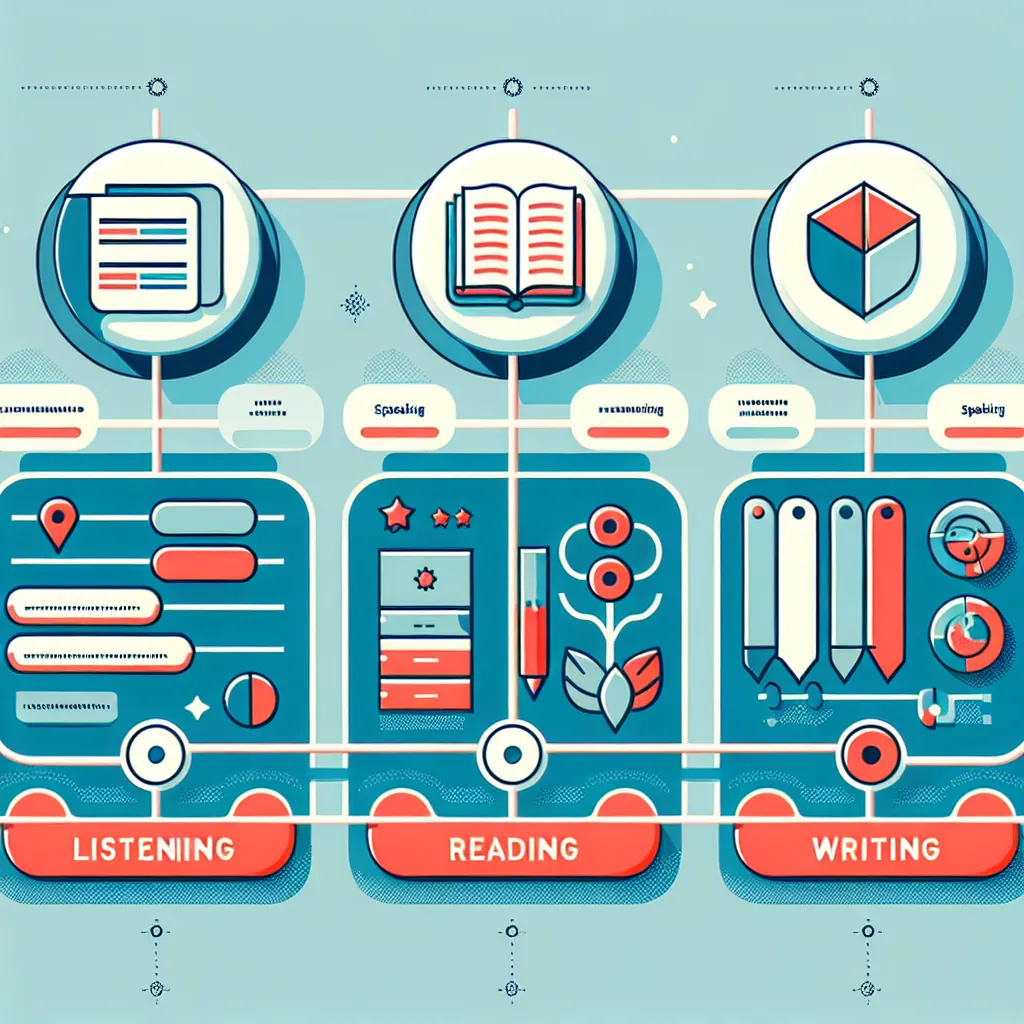The IELTS Reading section is a crucial component of the test, designed to assess your ability to understand and interpret written English. To excel in this section, it’s essential to familiarize yourself with the various question types you may encounter. This comprehensive guide will explore the different types of questions in the IELTS Reading section, providing you with valuable insights and strategies to boost your performance.
Understanding the IELTS Reading Section
Before diving into the specific question types, let’s briefly overview the IELTS Reading section. This part of the test consists of three passages of increasing difficulty, with a total of 40 questions to be answered in 60 minutes. The passages cover a range of topics, from general interest to academic subjects, and are designed to test your reading comprehension skills.
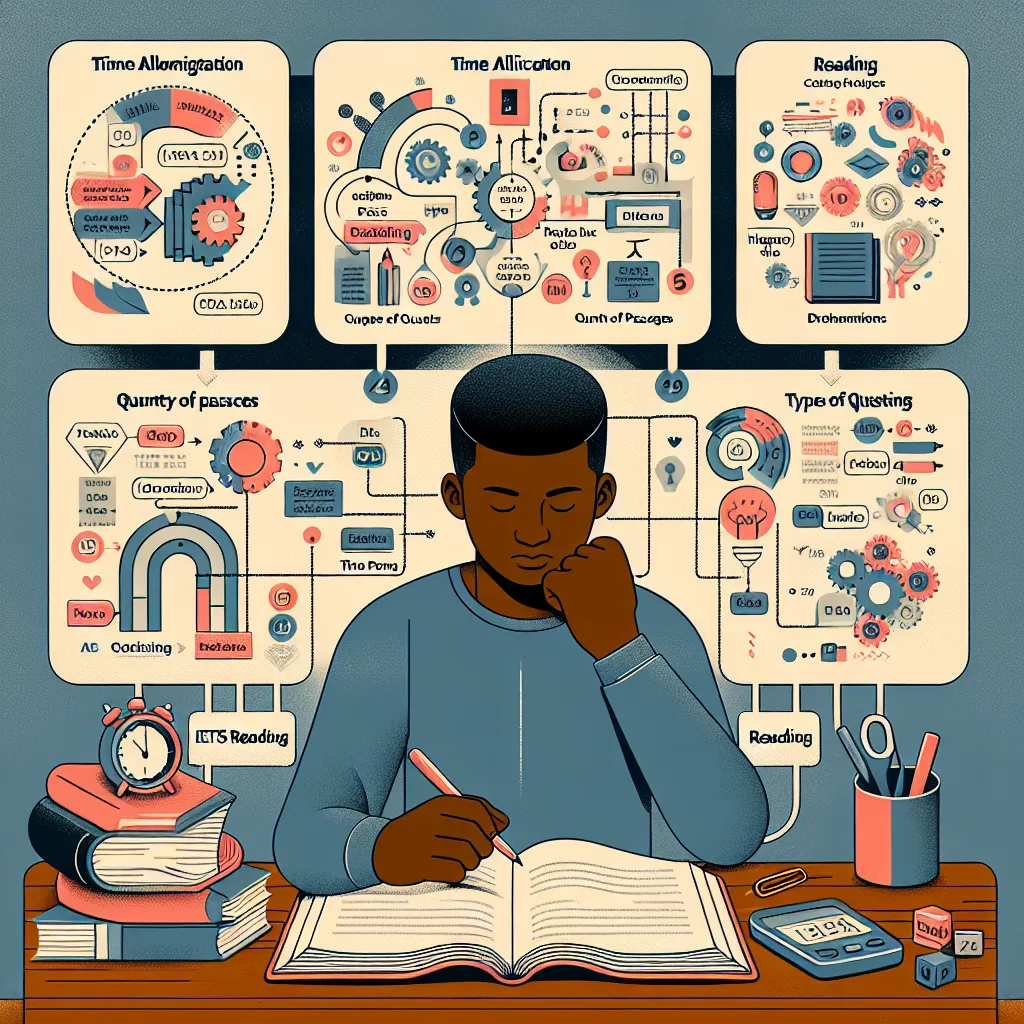 IELTS Reading Section Overview
IELTS Reading Section Overview
Common Types of Questions in IELTS Reading
1. Multiple Choice Questions
Multiple choice questions are a staple in the IELTS Reading section. They typically present a question or incomplete statement followed by three or four possible answers.
Example:
Question: The author suggests that the main reason for deforestation is:
A) Climate change
B) Urban expansion
C) Agricultural development
D) Timber production
Strategy:
- Read the question carefully and underline key words.
- Scan the passage for relevant information.
- Eliminate incorrect options before selecting your answer.
2. True/False/Not Given Questions
These questions require you to determine whether statements are true, false, or not given based on the information in the passage.
Example:
Statement: The study found a direct correlation between exercise and improved mental health.
Options: True / False / Not Given
Strategy:
- Understand that ‘Not Given’ means the information is neither confirmed nor contradicted in the passage.
- Look for specific evidence in the text to support or refute the statement.
- Be cautious of paraphrasing – the wording may be different but the meaning the same.
3. Matching Information
In this type of question, you need to match statements or headings to paragraphs or sections of the text.
Example:
Match the following statements to the correct paragraph (A-F):
- A historical overview of the topic
- The economic implications of the issue
- Potential solutions to the problem
Strategy:
- Skim each paragraph to understand its main idea.
- Use keywords to help you locate the relevant information quickly.
- Cross out options as you use them to avoid confusion.
4. Sentence Completion
These questions require you to complete sentences using words from the passage, often with a word limit.
Example:
Complete the sentence using NO MORE THAN TWO WORDS from the passage:
The researchers concluded that the new treatment was ____ for patients with chronic pain.
Strategy:
- Pay attention to the word limit specified in the instructions.
- Ensure your answer fits grammatically into the sentence.
- Look for synonyms or paraphrased ideas in the passage.
5. Summary Completion
Similar to sentence completion, but involving filling in gaps in a summary of a section of the text.
Example:
Complete the summary below using words from the box:
The study examined the effects of __ on plant growth. Results showed that plants exposed to __ grew faster than those in the control group.
Strategy:
- Read the entire summary first to understand the context.
- Use the surrounding words as clues to help you select the correct answers.
- Check that your answers make logical sense in the context of the summary.
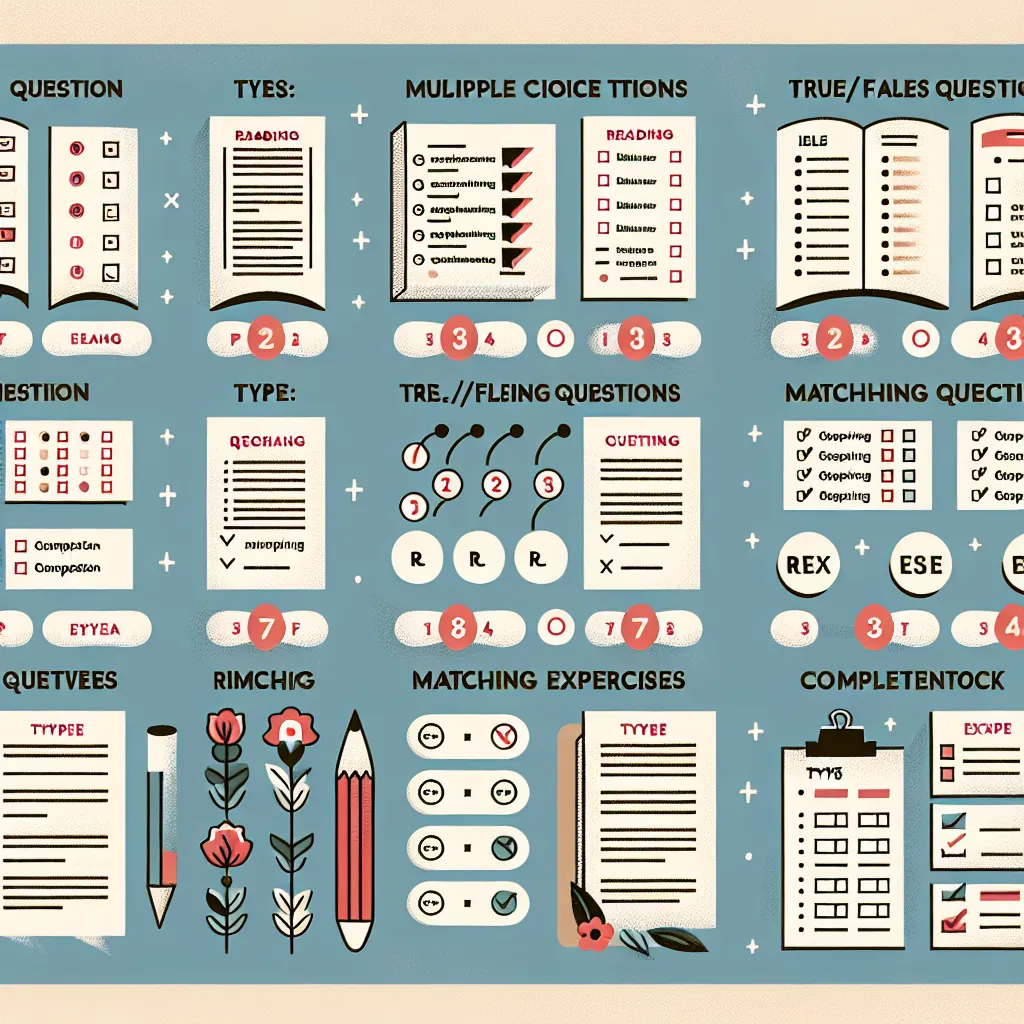 IELTS Reading Question Types
IELTS Reading Question Types
6. Short Answer Questions
These questions require you to answer using a limited number of words, usually taken directly from the passage.
Example:
Answer the following question using NO MORE THAN THREE WORDS:
What was the primary cause of the species’ decline according to the study?
Strategy:
- Stick strictly to the word limit given.
- Look for specific details in the passage that directly answer the question.
- Ensure your answer is grammatically correct and makes sense on its own.
7. Diagram Labeling
This type of question involves labeling a diagram or picture using information from the text.
Example:
Label the parts of the cell diagram using words from the passage:
[Image of a cell with blank labels]
Strategy:
- Study the diagram carefully before reading the relevant part of the text.
- Look for descriptive language in the passage that matches the visual elements.
- Double-check that your labels are spelled correctly and fit logically with the diagram.
Tips for Mastering IELTS Reading Questions
-
Practice Time Management: Allocate your time wisely across all three passages and question types.
-
Improve Your Skimming and Scanning Skills: Learn to quickly identify key information without reading every word.
-
Expand Your Vocabulary: Familiarize yourself with academic and topic-specific vocabulary commonly used in IELTS passages.
-
Read the Instructions Carefully: Pay close attention to word limits and specific requirements for each question type.
-
Use Process of Elimination: For multiple-choice questions, cross out options you know are incorrect to increase your chances of selecting the right answer.
-
Transfer Your Answers Carefully: Ensure you transcribe your answers accurately to the answer sheet within the given time.
Conclusion
Understanding the various types of questions in the IELTS Reading section is crucial for success in your IELTS journey. By familiarizing yourself with these question formats and practicing regularly, you can improve your speed, accuracy, and confidence in tackling the Reading section. Remember, consistent practice with a variety of question types is key to achieving your desired score. Keep refining your strategies, and don’t hesitate to seek additional resources or professional guidance to further enhance your IELTS Reading skills.
